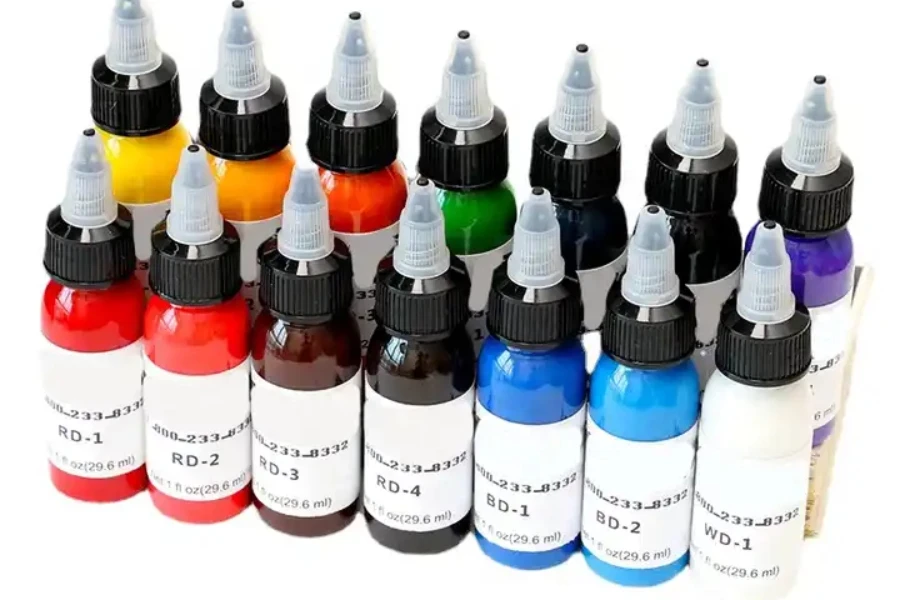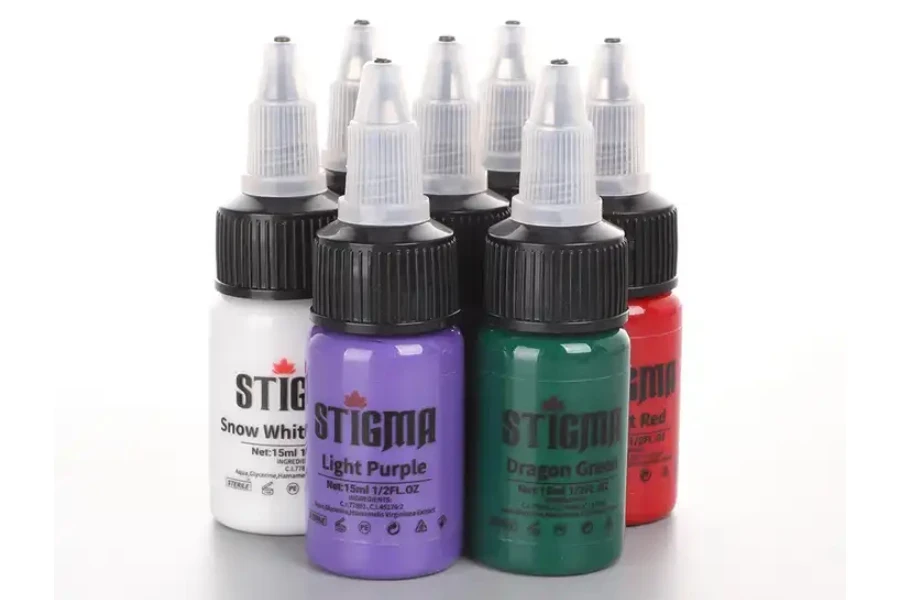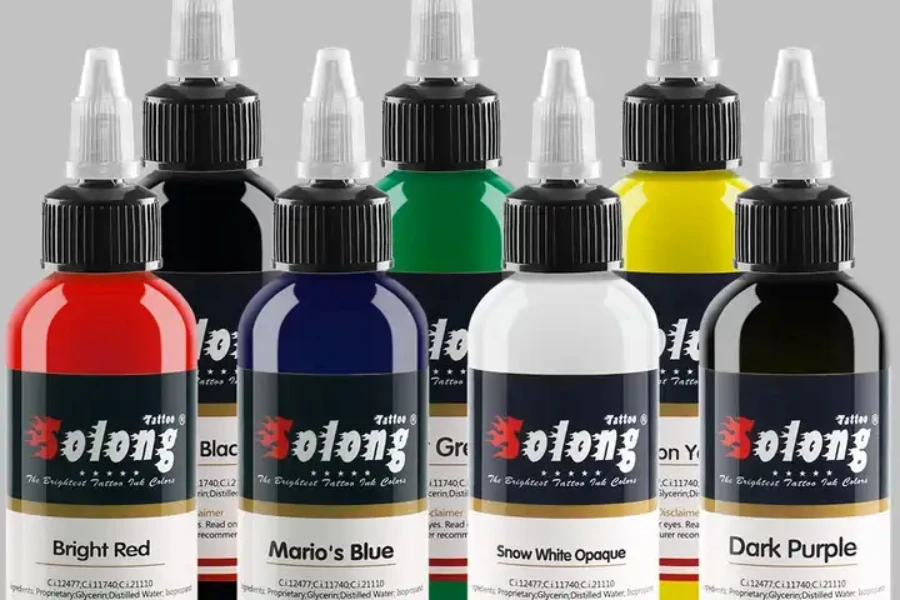Some consumers rock tattoos that feel and look like limited art pieces, while others have ones they feel ashamed to show the world. Other than the tattoo artist’s skills, the ink they use is one defining factor that makes or breaks these permanent makeups.
Tattoo inks are one of the most important tools in an artist’s kit, so they often spend some time choosing the best ones for their clients. Similarly, businesses must also take the time to curate their tattoo ink offers if they want to make any sales in this market.
Luckily, this article will serve as a guide, showing sellers what they need to cross off their lists when stocking up on tattoo inks in 2024.
Table of Contents
Tattoo ink: an overview of the 2024 market
Understanding tattoo ink safety regulations
5 tips to help choose the perfect tattoo ink for eye-catching tattoos
Rounding up
Tattoo ink: an overview of the 2024 market
The global tattoo market accumulated a US $233.10 million value in 2022. However, experts predict the market will reach US $335.96 million by 2029 at a 4.36% compound annual growth rate (CAGR). They also expect tattoo ink usage will rise significantly globally as more people get tattoos.
According to reports, global tattoo ink usage has boosted by 5.46% in the past five years, from 376.44 MT (metric tons) in 2012 to 465.6 MT in 2022. Based on type, black and gray tattoo inks had the highest consumption rate in 2022 (309.42 MT).
The 18–25 age group also dominated the end-user segment, as young people are most likely to get tattoos. Europe and America emerged as the top tattoo-ink-consuming regions, with Italy having the highest tattooed population (48%), Sweden (47%), and the USA (46%), respectively, coming in second and third.
Understanding tattoo ink safety regulations

Tattoos should be a safe (albeit painful) way for people to express themselves and enjoy body art, so it’s no surprise that tattoo inks have strict safety regulations. For example, the European Chemicals Agency (ECHA) pushed some regulations that required tattoo ink manufacturers to stop using some original ingredients for safer products.
Now, most of these manufacturers opt for ingredients that meet REACH standards. Likewise, the FDA performs similar roles in the American market, helping to keep tattoo inks safe for consumption.
Now, tattoo inks go through stringent testing to ensure regulatory compliance. Hence, businesses must ensure the inks they purchase meet the safety regulations of their target regional market.
5 tips to help choose the perfect tattoo ink for eye-catching tattoos
1. Know the properties of each available color

Tattoo ink colors are not as simple as the ones used for painting. Each hue comes with different properties that make it stand out. Some tattoo artists may even prefer certain colors over others, so sellers shouldn’t just pack all the colors they can find.
Here’s a detailed overview of all the available tattoo ink colors and their properties:
| Color | Description |
| Black and blue | These are the most popular tattoo ink colors, and they’re suitable for tan, black, and fair skin. Also, black, gray, and blue are the easiest colors to remove with lasers! However, black is the most widespread among the three. Tattoo artists consider it the best color for line work and containing color. |
| Red | Red ink has a notorious reputation in the tattoo world. Many people are allergic to the pigment, so it’s not very widespread for tattoos. In addition, red ink loses vibrancy faster than darker colors. |
| Orange, yellow, and purple | These colors are not universal. They may fade quickly on pale-skinned consumers and need more rendering to look great. While purple can be considered a dark color, it loses its intensity faster than black or blue. |
| White ink | This tattoo ink color glows in ultraviolet light, making it a better fit for pale and freckle-free skin. Although it offers a subtle look, white ink fades faster and may resemble scars if done improperly. |
| Blacklight | UV tattoos feature fluorescent ink that glows in ultraviolet light (backlight). But unlike white ink, these colors may cause allergic reactions—they also don’t have official FDA approval. |
2. Examine the pigment quality and concentration

Tattoo inks contain pigments that help define their quality. These pigments are the secret behind creating beautiful and long-lasting body art, so choosing the best inks means opting for high-quality pigments.
Tattoo inks made from high-quality pigments offer more stability, regardless of the environmental factors (moisture, UV light, or others). For this reason, high-quality pigments have more fade resistance, allowing clients to enjoy their tattoo’s brilliance when it’s fresh and when it heals.
But high-quality pigments are not the only aspect determining the best tattoo inks. Concentration also plays a big role. Inks with higher pigment concentrations offer even coverage and more vibrant results.
3. Don’t forget consistency and flow rate
Tattoo inks also offer different consistencies, determining how thick or thin they will be. This consistency also defines their flow rate. For example, thicker inks may be tricky to put into the client’s skin, while thinner ones may be too runny to work with.
Many tattoo artists love a comfortable medium between thick and thin. But even this “sweet spot” varies among tattoo artists, with some preferring slightly thicker or thinner medium consistencies.
But what determines tattoo ink consistency? The formula’s carrier ingredients have the largest influence on this aspect as they move the pigment into the skin. Common carriers include hazel, alcohol, and glycerin.
4. Compatibility with different skin types is a must
While pigments are undoubtedly important, they’re not the only ingredients to watch out for. Tattoo inks also contain additives and other ingredients, and businesses must opt for safe, pure, and natural ones.
It’ll help reduce the chances of allergic reactions or other tattoo complications.
5. Choose between pre-dispersed and stable pigments
Businesses must also choose between pre-dispersed and stable pigments when choosing tattoo inks. Pre-dispersed pigments are pretty popular today because of how convenient they are to use.
Pre-dispersed tattoo inks come with a predetermined pigment-to-carrier solvent ratio, so consumers don’t have to do extra mixing or thinning—they’re shake-and-use inks! Such tattoo inks are the best for beginner tattoo artists.
On the other hand, stable pigments need careful mixing and blending before usage. Hence, they’re ideal for advanced and highly experienced tattoo artists.
Rounding up
As more people become willing to get tattoos, it’s no surprise they’ll want ones that’ll look amazing for years (with proper care, of course!). Poor-quality tattoos are one of the biggest reasons people regret their body art decisions, but tattoo artists can combat this with premium-quality ink (and great skills, too).
That’s why businesses must leverage the tips in this article to stock up on the highest-quality inks for their target consumers—time to maximize profits from the tattoo ink market in 2024.




